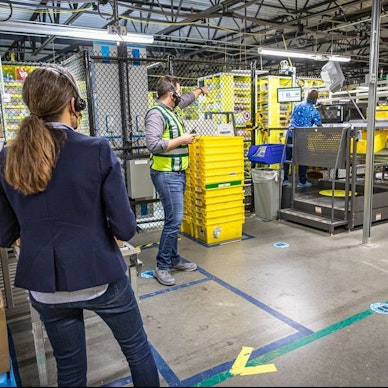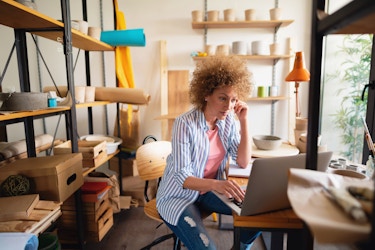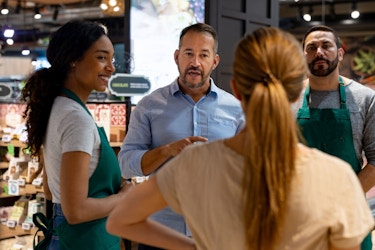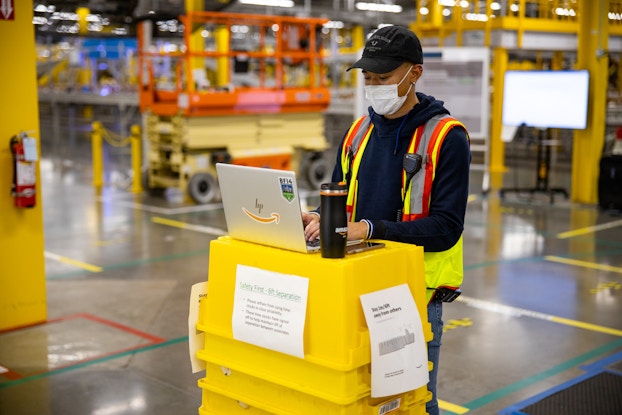
For businesses of all sizes, on-the-job safety has taken on a new meaning and importance in the COVID-19 era. That's why Amazon implemented over 150 new workplace health and safety protocols early on in the pandemic to protect its frontline workers.
The measures Amazon put into place — including enhanced cleaning and PPE availability, on-site COVID testing and temperature checks, and setting social distancing and capacity parameters to avoid overcrowding — have gone a long way to reduce the spread of the virus in the workplace. But what happens when employees leave for the day?
Employers with in-person staff have realized they can't control employees' actions and behaviors outside the workplace. What they can do, however, is educate their teams about how to stay safe at home and while out in the community, so they can do their part to protect themselves and each other.
To that end, Amazon launched a "Safe at Home" campaign to help employees and their families learn and follow best health practices while they're at home.
"The training and communication on the importance of these safety measures has been really critical," said Heather MacDougall, vice president of Worldwide Workplace Health and Safety for Amazon. "[Our 'Safe at Home' campaign] offers educational materials for families and children, so they're learning about not just being safe at work, but safe at home with their family, their friends and in their community."
Promoting safety outside the workplace: Amazon's 'Safe at Home' tips
Amazon's "Safe at Home" campaign includes short educational videos that cover topics like dining out, safe social gatherings, shopping in person and more. Business leaders can leverage the lessons in these videos not only for in-person workers, but for remote workers who want to remain healthy and productive, even if they're working from home.
1. Hosting safe social gatherings
When hosting small social gatherings in your home, check your local guidelines to find out what's allowed. Many states are still limiting the number of people who can attend indoor and outdoor gatherings, so it's important to adhere to those restrictions when planning your guest list.
Before your gathering, contact each guest to ensure no one has experienced COVID-19 symptoms or been in contact with anyone with the virus. If you're hosting the party indoors, make sure your space is well ventilated to reduce the spread of germs. Space out your table settings, provide individual cutlery and drinkware, and designate one person to handle serving the food. Finally, ask that your guests keep masks or face coverings on when not eating or drinking.
2. Safely dining out
If you're dining at a restaurant, choose a place with outdoor seating options that clearly states its COVID-19 safety guidelines and practices. Ideally, the place you choose to eat should offer plenty of space between tables, stay on top of hygiene and cleaning, and offer an electronic (contactless) menu when you arrive. Try to plan your visit during a "slower" time so there will be fewer diners. When you arrive, wash your hands before and after eating, and keep your face covering or mask on until your food arrives. If possible, use a contactless payment method to pay your bill.
[Our 'Safe at Home' campaign] offers educational materials for families and children, so they're learning about not just being safe at work, but safe at home with their family, their friends and in their community.
Heather MacDougall, vice president, Worldwide Workplace Health and Safety, Amazon
3. Protecting yourself while shopping in-person
While shopping online and having items delivered to your home is the best way to limit your exposure to COVID-19, sometimes visiting a store in person is the only option to get what you need. Arrange for curbside pickup, if offered, to limit the amount of time you spend there and contact the store to ask when their quietest hours are so you can plan your trip accordingly. Sanitize your hands before and after your visit and pay with a contactless method if possible.
4. Commuting to work safely
If you carpool or take public transportation to work, keeping as much distance as possible between yourself and others is of paramount importance. Avoid touching your face after coming into contact with frequently touched surfaces like car door handles or handrails and be sure to sanitize your hands immediately once you've arrived at work. Keep your face covering or mask on at all times during your commute and sanitize your hands again once you've arrived home.
5. Keeping your family safe in and out of the home
Current COVID-19 guidelines encourage everyone to limit or avoid gatherings with people outside of their immediate household. If you do decide to spend time with extended family members and friends, gather outside (weather permitting), keep a safe distance of six feet, and wear a face covering or mask at all times unless eating or drinking. Inside your home, you and your family can protect each other by frequently washing your hands, avoiding sharing food or drinks, and limit physical contact with one another, especially if one person has been outside the home.
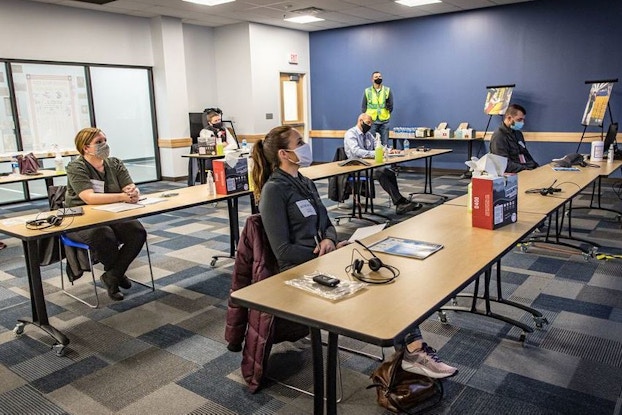
Protection through education: Helping employees and their families
Amazon has made all of its "Safe at Home" videos available to employees on YouTube and via "A to Z," an internal app that helps employees manage their work life at Amazon. In addition to the above tips, Amazon has also created videos that employees can share with their families, including explainers designed to help kids understand the impact of actions like washing hands and wearing masks.
The content created for this campaign mirrors the safety protocols Amazon enforces in its warehouses and facilities, so the company can empower its employees to reinforce these messages at home.
"Some of these videos have been our highest-viewed videos that we've shared throughout internal communications," MacDougall said. "They've been really effective in terms of helping our employees communicate with their families … about some of the things they're learning at work."
To learn more about Amazon's response to COVID-19, visit the company's blog.






